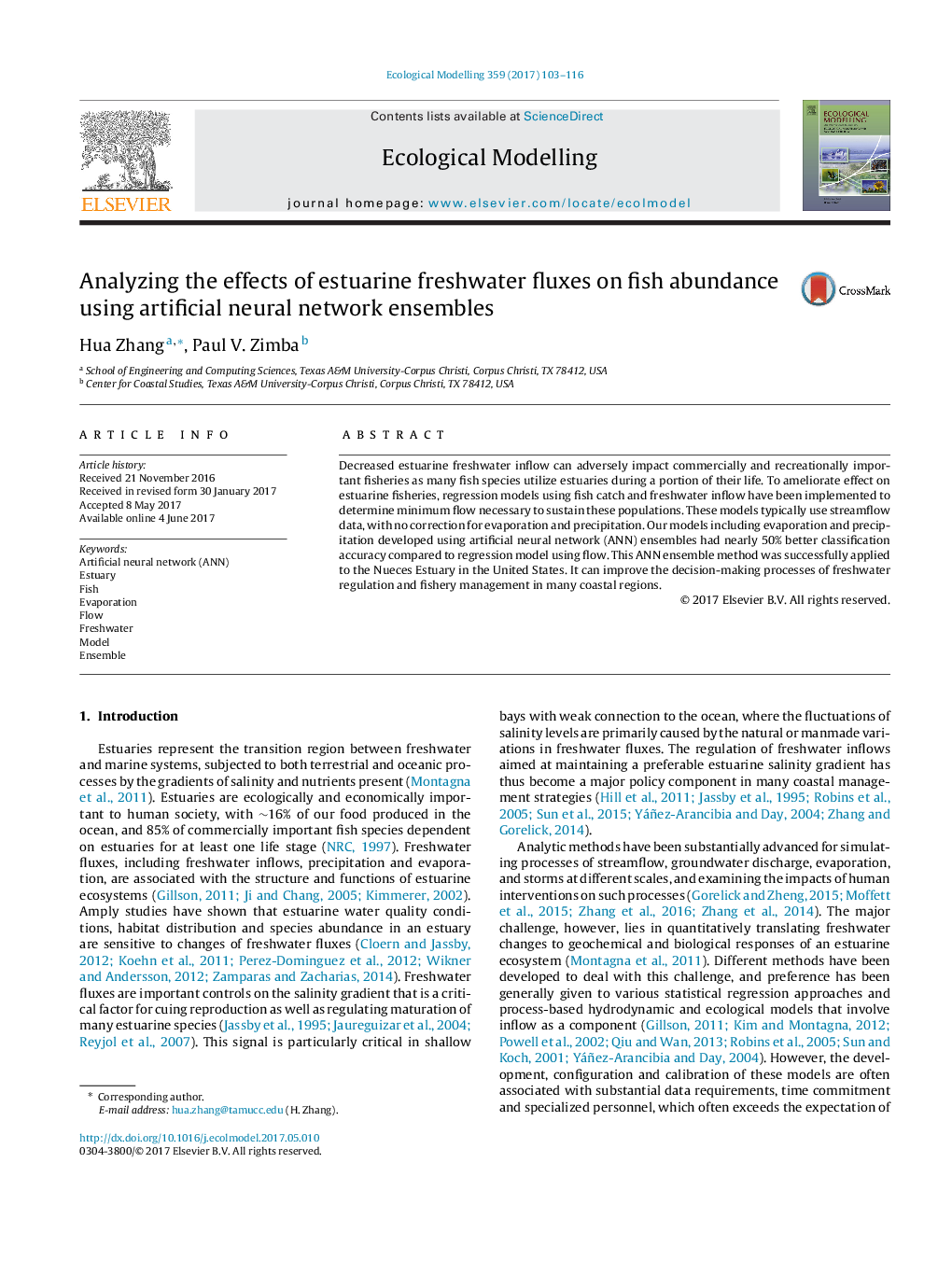| کد مقاله | کد نشریه | سال انتشار | مقاله انگلیسی | نسخه تمام متن |
|---|---|---|---|---|
| 5742124 | 1617388 | 2017 | 14 صفحه PDF | دانلود رایگان |
- Evaporation and precipitation affect estuarine freshwater balance and fish abundance.
- Including multiple freshwater fluxes improves the prediction of fish abundance.
- Artificial neural network ensembles outperform multilinear regression models.
- Data-driven approaches can benefit coastal fishery and freshwater regulation.
Decreased estuarine freshwater inflow can adversely impact commercially and recreationally important fisheries as many fish species utilize estuaries during a portion of their life. To ameliorate effect on estuarine fisheries, regression models using fish catch and freshwater inflow have been implemented to determine minimum flow necessary to sustain these populations. These models typically use streamflow data, with no correction for evaporation and precipitation. Our models including evaporation and precipitation developed using artificial neural network (ANN) ensembles had nearly 50% better classification accuracy compared to regression model using flow. This ANN ensemble method was successfully applied to the Nueces Estuary in the United States. It can improve the decision-making processes of freshwater regulation and fishery management in many coastal regions.
Journal: Ecological Modelling - Volume 359, 10 September 2017, Pages 103-116
